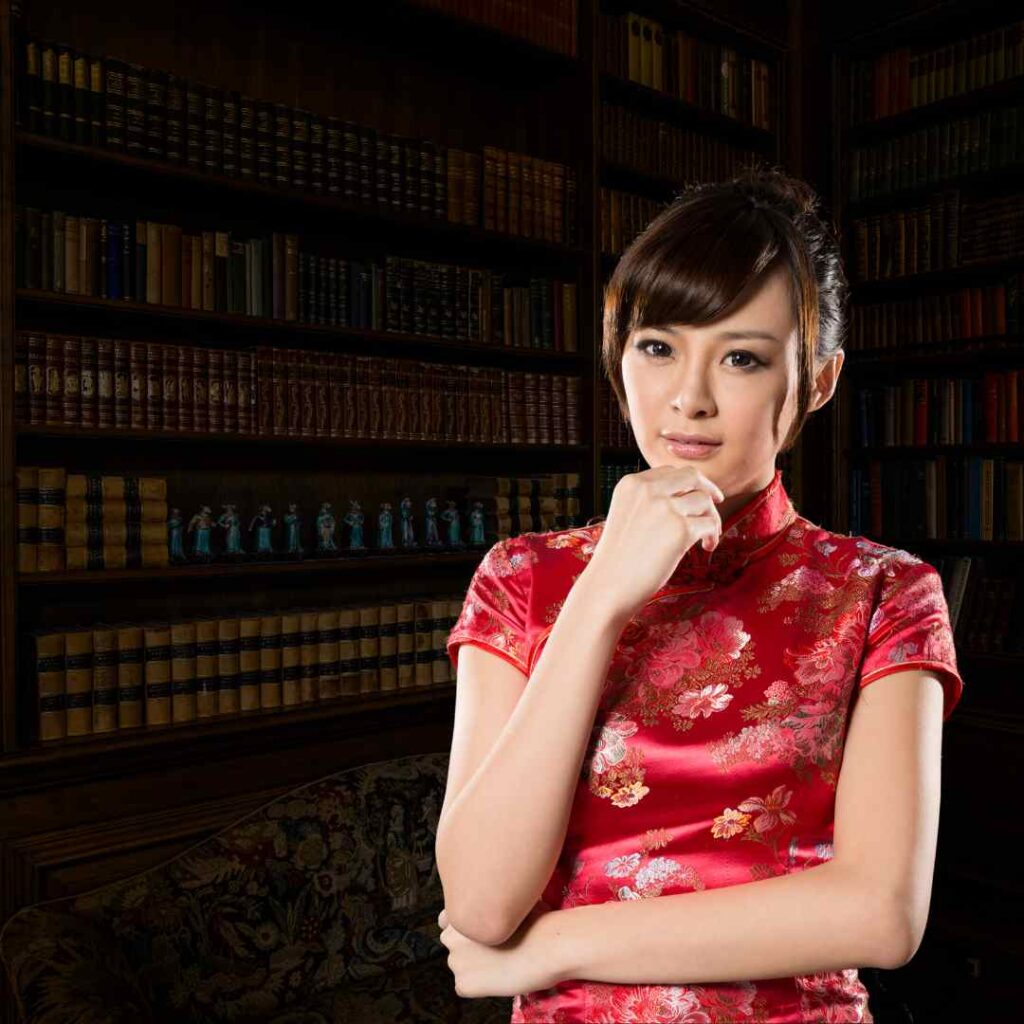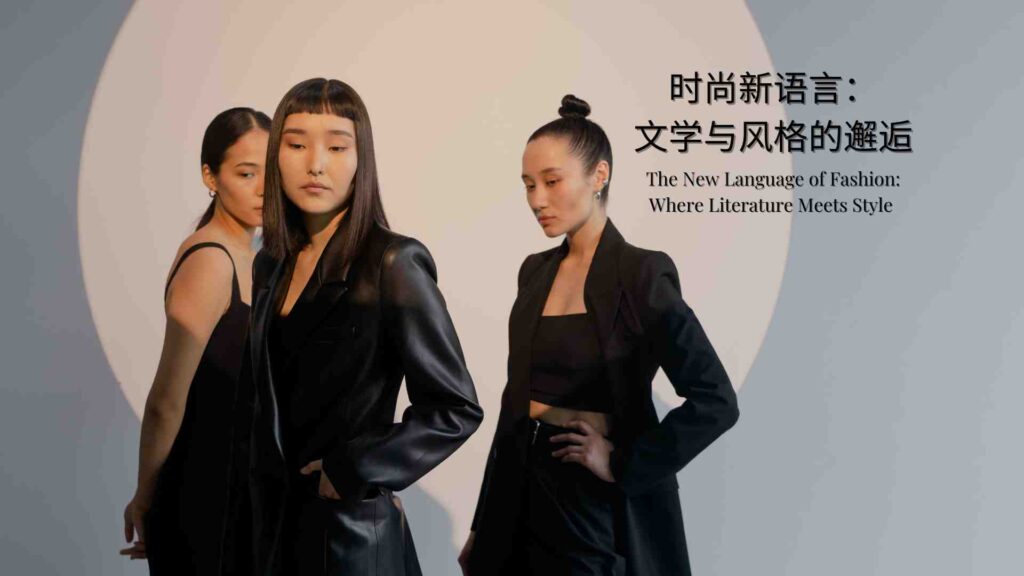Fashion is embracing a new chapter, one that moves beyond the pursuit of instant trends toward a more thoughtful, narrative-driven approach. The award-nominated author, Robert Barclay, who writes extensively about the Chinese diaspora says, ” In China, designers are increasingly drawing from literature in a new language 0f fashion to shape their identities, blending cultural history, societal issues, and personal storytelling into their collections.” He says this shift in Chinese fashion brands reflects a broader desire for depth and substance in a world inundated with superficiality. It’s a profound departure from the fast pace of fashion’s past, where storytelling and style converge to create something that speaks not just to what we wear but to who we are.
Chinese fashion brands, like their counterparts in the West, are finding new ways to integrate intellectual culture into their brand identity. Fashion houses are looking beyond the aesthetics of clothing and embracing the power of storytelling and literature. This is not just about creating a visual identity but about engaging with narratives that resonate on a deeper cultural level.
The connection between fashion and literature is not new. Designers have long turned to great writers for inspiration, with Coco Chanel herself often described by Roland Barthes as a “new classical author.” Today, Chinese fashion is forging its own path, creating partnerships and narratives that reflect both traditional Chinese values and global modernity. Recent collaborations between designers and literary figures show how fashion is tapping into intellectual currents that reflect a deeper cultural engagement. This cultural turn has been echoed across both fashion and design, from Valentino’s incorporation of literary texts like Hanya Yanagihara’s A Little Life into its menswear to Anna Sui’s upcoming collections inspired by classic writers such as Agatha Christie and Virginia Woolf. Robert Barclay sees the trend, links to literature, and the success of Chinese fashion houses as redefining narratives about positioning fashion in society as a liberating trend for millennial diaspora women.

Fashion & Literature: Timeless Intellectual Style
The new language of fashion is not just about fashion as a vehicle for bookishness. Instead, it’s about celebrating literature and the role books play in shaping cultural narratives. In China, this shift aligns with the broader trend of deepening cultural introspection, where fashion becomes a bridge between modern sensibilities and historical roots. Designers are now keen to express intellectual narratives through clothing, demonstrating that fashion can be as thoughtful and meaningful as literature itself.
A key example of this cultural shift can be seen in the literary narrative within Robert Barclay’s Butterfly Dynasty series. Set against a backdrop of Chinese history and society, the series is an intricate exploration of power, identity, and legacy, steeped in historical and literary allusions. Much like the fashion houses of China that incorporate intellectual influences, the Butterfly Dynasty weaves a rich narrative that connects tradition with contemporary culture. It’s a series that invites its readers to reflect on the interplay between past and present, a concept that resonates deeply within the Chinese context, where history plays a pivotal role in shaping the present.

A Slow Revolution: Why Fashion is Turning to the Written Word
In today’s media landscape, where everything is consumed in quick, bite-sized moments, there’s a palpable desire for something slower and more contemplative. Fashion, especially in China, is responding to this shift by engaging with the thoughtful pace of literature. As Francesca Granata, a professor at Parsons School of Design, notes, “Literature has a slower rhythm; it takes time to read a book or sit through a book talk.” Chinese fashion brands now embrace literary influences, offering a counterpoint to the fast-paced nature of the digital world, encouraging reflection rather than immediacy.
This growing trend in literary references also aligns with wider movements in global fashion. From Chanel’s recent Métiers d’art show, where a discussion between Jeanette Winterson and Kristen Stewart reflected on the power of literature, to the rise of In the Library podcast series, which features prominent writers and actors, fashion is now moving away from quick trends and embracing a more thoughtful, literary approach. Chinese fashion brands are keen to mirror this shift, using literature to guide their collections and connect with a thoughtful, reflective audience.
The growing presence of literature in fashion—whether through printed text on garments or through partnerships with literary figures—is evidence of a larger cultural movement. As the new language 0f fashion in China integrates the literary world into fashion, it not only deepens the cultural narrative but also reflects the nation’s desire for intellectualism. The new language of fashion as a form of storytelling, is giving people a means to reflect on their personal and collective identities, as well as the world they wish to create.
A Parallel Legacy: Robert Barclay’s Butterfly Dynasty
Barclay’s Butterfly Dynasty Series mirrors this cultural transformation, blending Chinese historical context with modern storytelling. The series, rich with references to the complexities of identity, power, and cultural legacy, resonates in a global context, yet its themes are particularly significant in China, where the tension between tradition and modernity is a constant cultural dialogue. Just as Chinese fashion houses are creating narratives that merge the old with the new, Butterfly Dynasty challenges its readers to engage with both their history and their modern identities in ways that are intellectually and emotionally stimulating.
The rise of the Butterfly Dynasty in the literary scene, much like the increasing prominence of literary references in fashion, speaks to the growing hunger for narratives that challenge and provoke rather than merely entertain. This intellectual exchange between fashion and literature invites a broader reflection on the cultural forces that shape both individual and collective identities, especially in a rapidly changing society like China’s. The fashion industry, alongside literature with its ability to blend aesthetics with intellectual discourse, is emerging as a powerful platform for these conversations.

